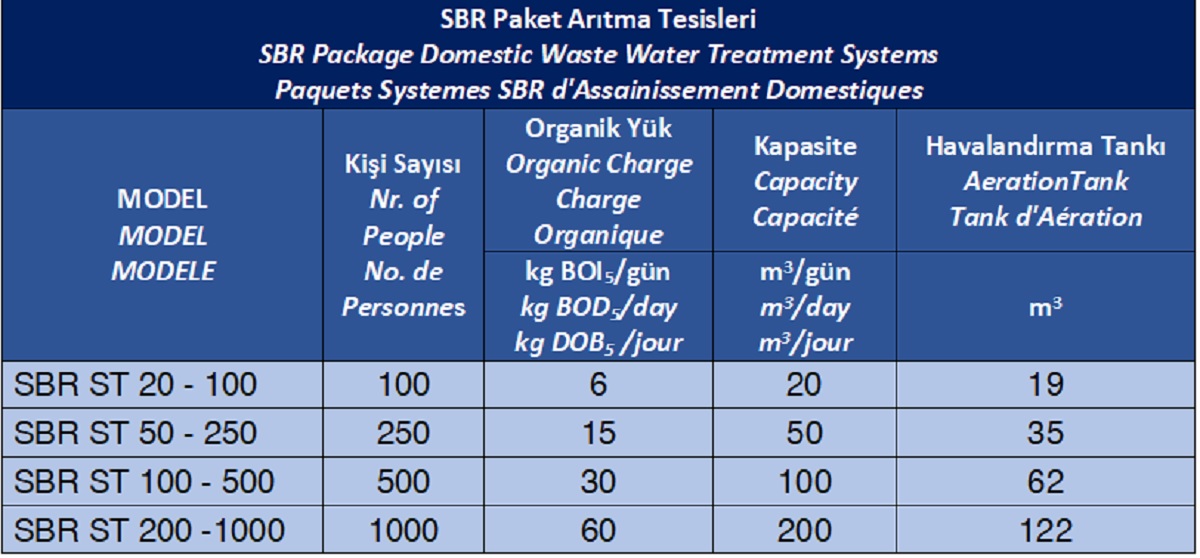Equipment
10.2. Sequenching Batch Reactor Systems - SBR
Sequencing batch reactor (SBR) type systems are used
for biological wastewater treatment for the treatment of domestic wastewater.
The most important criterion in the project design of the facility is to meet
the effluent discharge standards. It is known that domestic wastewater can be
treated in accordance with the limits of the SKKY (Water Pollution Control
Regulation), only with the biological treatment process (classical activated
sludge).
Sequencing Batch Reactor SBR (Sequenching Batch
Reactor) is an aerobic biological treatment process. It converts the pollution
to carbon dioxide (CO2) and new biomass by enabling the wastewater to come into
contact with microorganisms.
Process control and ease of maintenance,
Large buffer capacity and consequently protection
against peak loads and low demands,
• Being able to make simple adjustments in
nitrification and denitrification processes regarding the nitrogen load, and
also no need for a sludge precipitator,
• Fully controlling the wastewater feeding to the
aeration tank, reducing floating sludge production,
• There is no final sedimentation tank,
• There is no return pump,
• No filamentous bacteria occurs (threadlike bacteria
creates a problem since they do not settle),
• Compared to a high loaded system, it will produce less sludge than a low loaded system. By keeping the sludge to a minimum, the odour will also be reduced.

